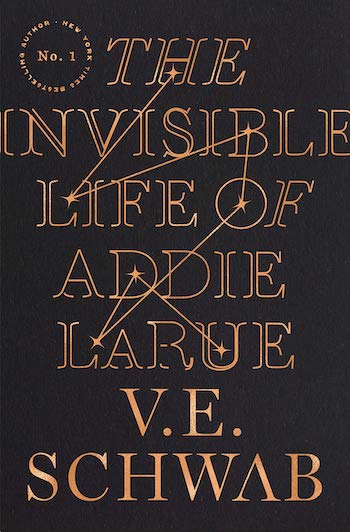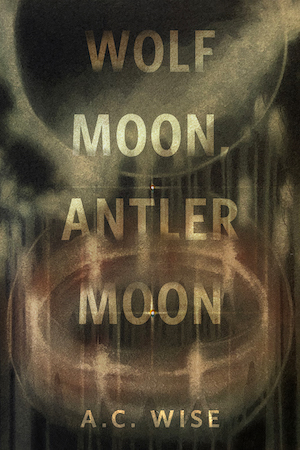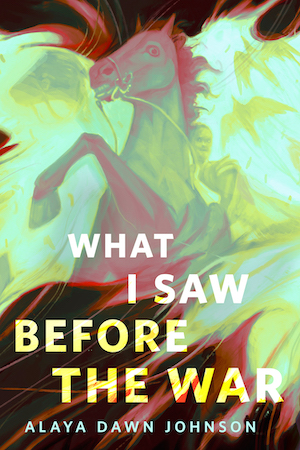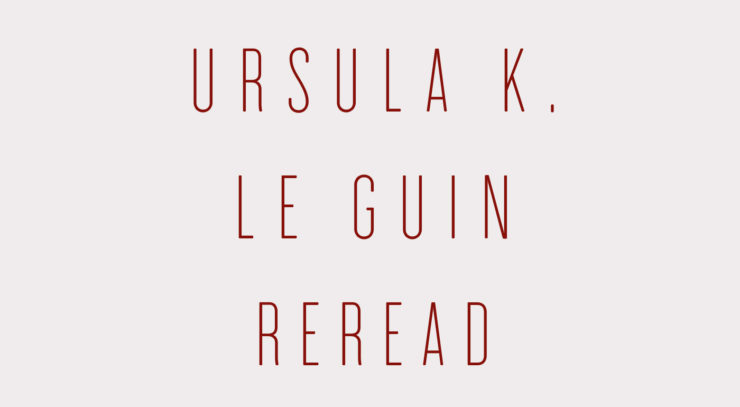In the course of this reread, I’ve stated pretty regularly that one of the most admirable aspects about Le Guin as a writer is her witnessing of criticism and her ability to change to address her political failures throughout her career. In 1977-1978, Le Guin was writing a story (really, a short novel) for her agent Virginia Kidd’s 1978 story collection Millennial Women, which touted itself as “tales for tomorrow” by and about women. The book collected six pieces by (white) women—Cynthia Felice (best known for collabs with Connie Willis), Diana L. Paxson (among SF and paganism creds, she also co-founded the SCA!), Elizabeth A. Lynn (who pioneered queer relationships in fantasy), Cherry Wilder (a New Zealand fantasy writer), Joan D. Vinge (no intro necessary), and Le Guin herself—featuring women protagonists. Le Guin was clearly the selling point of the book, the cover of which included only the title, editor name, and “Including a new novel by Ursula K. Le Guin.”
So, in 1977 Le Guin had to write if not a feminist story then at least one with a woman at the helm. Le Guin had of course done this half a decade earlier in The Tombs of Atuan, which I’ve already argued is a pretty damn feminist novel, despite what I’m about to say. And what I’m about to say is: Le Guin had a hard time writing her contribution to Millennial Women because, as she reflected in a 1994 interview, “The book had a woman in it, but I didn’t know how to write about women.” This is probably a bit of a confusing statement, given The Tombs of Atuan, but as feminist criticism of books like The Left Hand of Darkness and A Wizard of Earthsea showed, Le Guin certainly waffled on her commitment to any politics around gender. But Millennial Women helped her to confront her supposed inability to write about women. As she put it,
I blundered around awhile and then found some guidance in feminist theory. I got excited when I discovered feminist literary criticism was something I could read and actually enjoy. I read The Norton Book of Literature by Women from cover to cover. It was a bible for me. It taught me that I didn’t have to write like an honorary man anymore, that I could write like a woman and feel liberated in doing so.
Le Guin’s discovery of feminist literary criticism helped her to understand and rethink some of the issues she was facing in her own writing style, but also led her to incorporate explicit critiques of gender into her books after 1978. Later work like Tehanu demonstrates how she became a feminist critic of her own writing, presenting a critical analysis in the form of a revisionist narrative about men and their obsession with power. All of this, then, gets prefigured and practiced in her piece for Millennial Women, called, rather mysteriously, The Eye of the Heron.
Eye of the Heron took up more than half of Millennial Women, a hardcover published by Delacorte. Kidd’s volume was later repackaged under the presumably less-terrifying-for-men title The Eye of the Heron and Other Stories as a paperback from Panther Science Fiction, with Le Guin credited as author and Kidd’s name appearing in a tiny font below the title as editor. Eventually, Heron got its own separate printing as just “a novel” and was reprinting pretty regularly throughout the 1980s and 1990s, and is now available in a slick paperback from Tor.
Heron is somewhat prototypical of Le Guin’s writing, in that it features a nascent political conflict between two groups who obviously represent ideas/concepts in the political terrain contemporary to its writing, and focuses this conflict through the eye of a male protagonist-genius-hero who also has a developing heterosexual relationship with a women who becomes the “center” of his world. It’s set on a colony in space. Political doctrine and the natural world feature prominently. Descriptions focus on the world and emotions, but characters are themselves rather flat and sparse. It is somewhat atypical in the sense that most of these things are typically handled with verve and aplomb by Le Guin, but Heron is neither virtuosic nor particularly well executed as a piece of writing.
Buy the Book


The Invisible Life of Addie LaRue
As Le Guin notes, in early drafts of this book, her protagonist was a male hero who insisted on getting himself killed halfway through, leaving her to wonder what to do… Probably a big concern for her, since the book was *checks notes on Millennial Women* not about male protagonists or masculine narratives of heroism. The novel, then, appears to have been heavily rewritten to incorporate the woman character who was already there, just somehow in the background of the story. Le Guin’s female protagonist is Luz Marina Falco, daughter of Councillor Falco, probably the most powerful man in the government of the City of Victoria (the City, for short), a colony on the planet of Victoria created by the descendants of violent criminal exiled from Earth by the government of “Brazil-America” some 100+ years ago. (I think the story was probably initially just about the male hero Lev and the “woman” in it that Le Guin refers to in the interview above was probably Southwind, not Luz; my guess, based on the structure of the novel, is that Luz was added in the rewrite phase.)
Heron tells the story of how a community of nonviolent anarchists living in Shantih or Shanty Town has become fed up with their exploitation by the Bosses in the City. The people of Shantih are descendants of colonists sent fifty years ago by the government of Canamerica, after the original criminals touched down and established Victoria. The Shantih were exiled from Earth following a massive religious, nonviolent protest march from Moscow to Lisbon, and from there on shipped to Montreal, where they were imprisoned by Canamerica for not supporting “The War” with “The Republic” (yes, we’ve come to Hunger Games-levels of vaguery in this book). The Shantih are also called People of the Peace, and are a religio-political movement that seeks Truth and Freedom through nonviolent means based on the teaching out their philosopher-heroes: Gandhi and Martin Luther King, Jr.
After fifty years of exploitation by the City, who follow a masculinist-capitalist vision of take-take-take for me-me-me, the Shantih have decided to relocate a portion of their community to a new settlement out in the wilderness. The conflict over their decision to do so, and the City’s refusal to allow their easily exploited (because the Shantih don’t actively resist their exploitation) labor to leave, bring about a series of increasingly violent police measures from the City (led by Don Falco) to stop the Shantih from leaving. Falco goes as far as creating a new plantation system, on which political prisoners (i.e. the Shantih) are to be slave laborers, and levying an army to enact his will.
On the other side of things, Lev Schults, the young, charismatic leader of the People of the Peace, organizes the Shantih against the City with increasingly confrontational though nonviolent actions, e.g. staging a labor strike and leading a march of 4000 people to the City. His story is joined with that of Luz, who has simmered with rage about her father’s and culture’s treatment of her as an object to be married off, to sit quietly and have no opinion, to bear children and then sew while the men do the important things. After learning about pacifism from her father’s prisoner, one of the Shantih leaders and mentor to Lev, Luz is curious about how the pacifists’ system encourages a feminist system of anarcho-democratic decision making. When she discovers her father’s plot to force the Shantih to “betray their ideals” by pushing them into something like open confrontation, she escapes to Lev (a former schoolmate) to warn him.
Heron moves back and forth between Lev’s and Luz’s viewpoints, telling the story of Luz’s growing recognition that patriarchy is harmful to her and Lev’s efforts to pacificistically organize and resist the City’s exploitation. When the two do meet, Luz brings her own sharp criticisms of the pacifist movement to bear on both the text and Lev himself. Already, Lev is seen by some of the older Shantih as something of a rabble-rouser who is close to betraying their pacifist ethos, but Luz pushes him in a different direction: leave for the new settlement without approval from the City, and seek freedom on your own terms. For Lev, this means prolonging a fight, and that discussion and agreement must take place with the City if true Freedom, on the Shantih’s own terms, is to be achieved. Of course, Luz, being familiar with the moral degradation of the masculinist-capitalist system of the City, is sure that any dialogue with the City is likely to become a pretext for the City to invoke further exploitation and enact further violence on the Shantih. Lev disagrees, leads a march of 4000 to deliver their demands to the City, and is shot and killed, while dozens are trampled to death in an ensuing “rush” by the Shantih that betrays their principles of pacifism.
But the story does not end here; the Shantih are demoralized by their self-betrayal and the City is not willing, with Falco under house arrest, to “negotiate” with the Shantih. Enter Elia, an old-school, talk-it-out, our-principles-cannot-change leader who enters a seemingly endless series of discussion with the City that will, likely, lead to significant compromised to the Shantih’s freedom. So Luz, tired of the bullshit of both the City and the ideologically blind People of the Peace, takes off with some of her new Shantih friends (many of the younger ones, former comrades of Lev) into the wilderness to found a new settlement near a pond where heron-like alien animals live.
That’s the story in a bit more than a nutshell. It is an undoubtedly feminist one, since the story follows Luz’s struggle to get out from under the thumb of her father, the man who wants to marry her, and the half-life of servitude and quiet promised to women who live in the City. She does so, she seeks her freedom, and she gives several monogloues that track her own growing feminist awakening. These are charming if not highly didactic, a product of Le Guin learning for herself how to write a “feminist character” and doing so by practicing actual feminist critique in the novel.
In the end, Luz seeks freedom on her own terms, not those of society or any overarching political ideology. This is familiar to Le Guin’s work generally: a character is aware of a radical system or movement for justice, but ultimately chafes against it, wants more, and so seeks out their own path to liberation. It’s a rather anarcho-libertarian take on freedom that tends throughout Le Guin’s writing to privilege individual agency and autonomy over broader social movements and coalition building. But this is also a habit of Le Guin’s writing style, which tends to focus on individual characters’ internal development and a handful of close personal relationships. I’ll leave this as a statement, rather than as a criticism, since I myself don’t yet have a good sense of how to reconcile the broader need for social justice and liberation with the more individualist vision Le Guin tends toward.
But Heron is more than just Le Guin’s “first” feminist novel; it is also an ode to her own interest in the nonviolent and pacifist movements. Pacifism is latent throughout her writing. Often, the (male) protagonists of her well-known books like The Dispossessed or The Left Hand of Darkness or Earthsea are men who disengage from conflict when and where they can. They are typically un-macho men for the science fiction and fantasy of the 1960s and 1970s, and Le Guin rarely writes battle scenes or fights (some of the early Hainish novels, like Rocannon’s World, are very slightly exceptions). Her men prefer to settle things with wits and their power, as in Earthsea, is less “I have a spell/weapon that can kill you all!” and more “I have a knowledge that will make you change!” They are, though not to a T and not across the board, pacificists of one sort or another who prefer dialogue to outright violence.
What is particularly interesting about this is Le Guin’s claim that her own political trajectory toward anarchism and later feminism grew out of her interest in nonviolent politics, like that of Gandhi or King. When asked by LitHub why she chose to write an anarchist novel, The Dispossessed (1974), she responded:
I’d been educating myself about pacifist anarchism for a year or more [i.e. in the early 1970s]. I started reading the non-violence texts—Ghandi [sic.], Martin Luther King and so on—just educating myself about non-violence, and I think that probably led me to Kropotkin and that lot, and I got fascinated.
So while the People of the Peace’s adherence to philosopher-heroes like Gandhi and King (the only ones they mention) seems at first a bit transparent and silly, and very purposefully hyper-relevant, the People of the Peace’s political ideas about change through dialogue and pacifist resistance end up making a whole lot of sense for Le Guin. Again, we see her as a writer who wears her learning on her sleeve. Writing in 1977 was just a few years after The Dispossessed, in which she went hard on Kropotkin to imagine a not-perfect utopia, and this distance gave her the space to reflect on her origins in anarchist thinking: pacifism.
Heron is transparent but also not uncritical of the pacifist movement, since Luz offers several whip-smart critiques and ultimately dispels the notion that the systems that “worked” on earth must be carried over wholesale to the new colony. We can start over, we can make Truth and Freedom on our own terms, not beholden to systems built for other historical and societal contexts. Moreover, Heron goes in hard against the cult of the hero. Yes, Gandhi and King are literally called heroes by the People of the Peace, and some of them seek to perform pacifist actions in order to become heroes themselves (an old guy, Pamplona, for example, spends a night in jail and finds the whole thing a wonder because it makes him a hero to his people; later, he is labor-drafted and suffers quite a bit, and the sense of heroism gone). Lev is held up as a hero by his people and dies for it. And Luz is pretty critical of this, attributing this need to be heroic, to make a name for oneself, to the same masculine ethos that drive her father Falco and the masculinist-capitalist world of the City.
Heron calls out the cults of heroism within radical political movements and does so from the perspective of a writer actively devoted to pacifism and yet critical of the ways in which broad political movements lead to hero worship that inevitably falters when the heroes fall. And Le Guin does so through a feminist critique in the very novel that breaks ground for being her first actively, purposefully feminist novel. There is plenty more to say about Heron, too, with regard to colonialism, links to both Australian and New England colonization (I get major Pilgrim vibes from the Shantih), and of Le Guin’s pervasive naturalism, which rears its head in the form of the title but which ultimately (in my mind) says very little about this or at least makes its point about alien animals, the wilderness, and human captivity/intrusiveness rather unclearly.
So it’s a mixed bag of a novel, much like Le Guin’s early Hainish works. Its brilliance is in what we learn about Le Guin from the novel, and less in the writing and the narrative itself. But I, of course, welcome pushback on this point and will eagerly read your own experiences with The Eye of the Heron in the comments. All I can say is, Heron is a novel that certainly deserves wider attention in Le Guin’s oeuvre, and should be readily discussed alongside The Dispossessed and contextualized when possible in the wider story of Le Guin’s political development as thinker and writer.
Join me in two weeks on Wednesday, November 11 as we turn to the first half of Le Guin’s novel Malafrena (1979). Be seeing you!
Sean Guynes is an SFF critic and professional editor. For politics, publishing, and SFF content, follow him on Twitter @saguynes.










